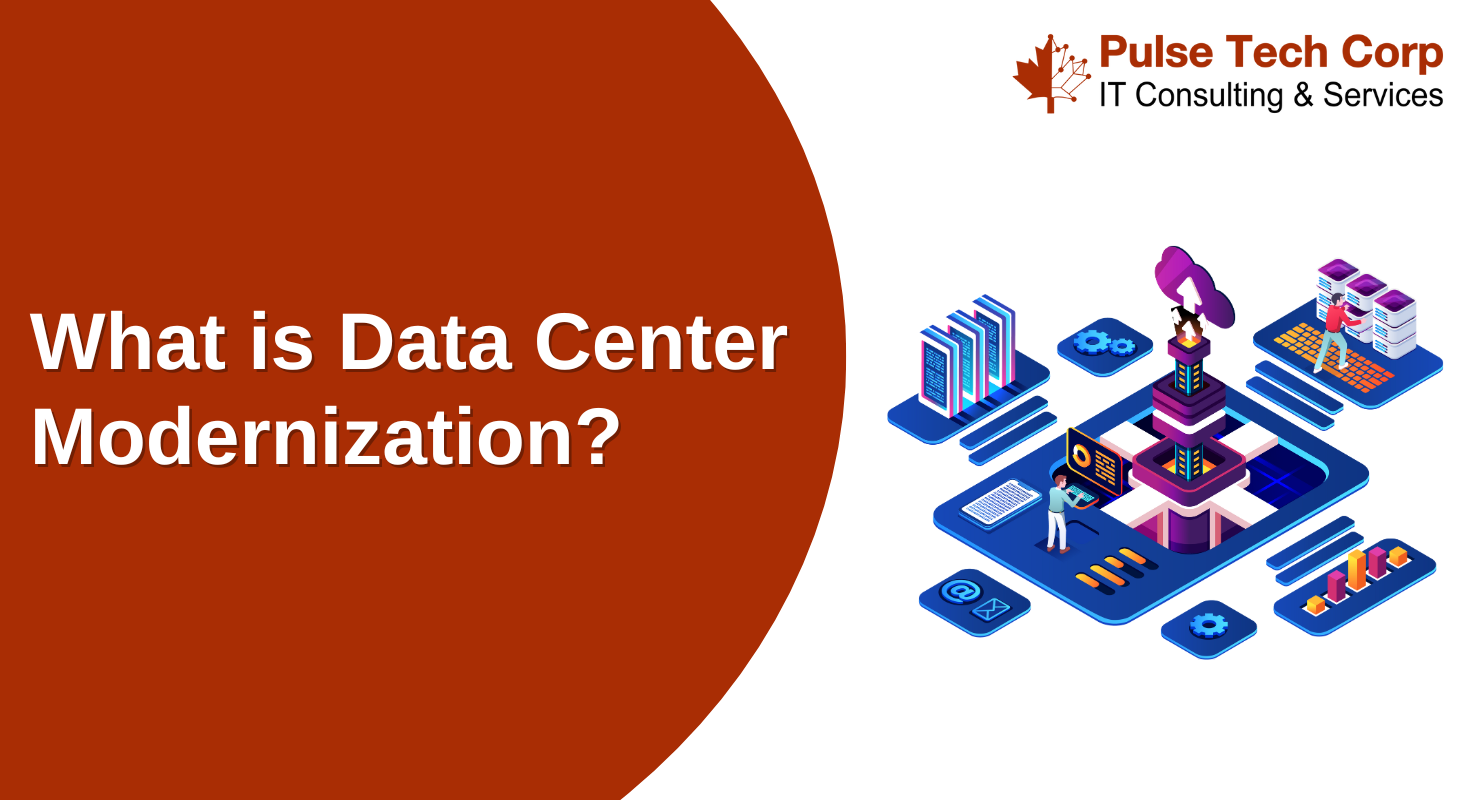Data Center Modernization: Transforming the Foundation of Digital Infrastructure
In today’s digital period, businesses are generating a substantial quantity of information, driving the requirement for effective and trustworthy data storage space and handling remedies. This surge in data has led to the evolution of data centers, which form the backbone of modern IT infrastructure. Data center modernization is the process of upgrading and optimizing these facilities to meet the growing demands of businesses and to capitalize on emerging technologies. In this blog, we will explore the concept of data center modernization, its benefits, the importance of upgrading data centers in the IT landscape, the main uses of data centers, and how they are evolving.
What is Data Center Modernization?
Data center modernization refers to the strategic process of enhancing and transforming data centers to leverage cutting-edge technologies, improve operational efficiency, and optimize performance. It involves upgrading various components of a data center, including hardware, software, networking infrastructure, security measures, and operational procedures. The goal is to create a more agile, scalable, and resilient infrastructure that can support the increasing demands of data-intensive applications and services.
Benefits of Data Center Modernization:
- Enhanced Performance: Improving information facilities allows companies to utilize the most up to date hardware and software technologies, causing improved efficiency and faster information handling. This leads to enhanced productivity, reduced latency, and better user experiences.
- Increased Scalability: As businesses grow and their data requirements expand, the ability to scale their data centers becomes crucial. Modernizing data facilities makes it possible for organizations to scale up or down their facilities resources promptly and successfully, allowing them to adapt to altering company requirements without disruption.
- Improved Energy Efficiency: Heritage information centers typically consume too many amounts of energy, causing high operational costs and environmental issues. Modernization efforts focus on optimizing power and cooling systems, using virtualization and cloud technologies, and implementing energy-efficient hardware designs. This results in decreased energy intake, reduced costs, and a smaller carbon impact.
- Enhanced Security: Data centers house critical business data, making security a top priority. Modernization involves implementing robust security measures, such as advanced firewalls, intrusion detection systems, encryption, and access controls. Upgraded data centers are better equipped to protect against cyber threats and ensure data privacy compliance.
- Streamlined Management: Modern data center management tools and automation technologies simplify the monitoring, maintenance, and provisioning of resources. This minimizes human error, boosts functional efficiency, and gives administrators with better visibility and control over the frame work.
The Importance of Upgrading Data Centers in IT:
Data center upgrades are essential for several reasons:
- Scalability: Upgrading data centers ensures organizations can accommodate increasing data volumes and user demands. Without proper upgrades, businesses may face performance bottlenecks, decreased reliability, and limited scalability.
- Support for Emerging Technologies: Upgraded data centers are better equipped to handle emerging technologies like artificial intelligence, machine learning, and the Internet of Things (IoT). These technologies require significant computational power and storage capabilities, which modernized data centers can provide.
- Business Continuity: Upgraded data centers offer improved redundancy and disaster recovery capabilities. They provide organizations with the ability to quickly restore services in the event of hardware failures, natural disasters, or cyber-attacks, minimizing downtime and preserving business continuity.
- Cost Optimization: Legacy data centers often incur high maintenance and operational costs. Upgrades allow organizations to optimize their infrastructure, reduce maintenance expenses, and take advantage of cost-effective cloud services and virtualization technologies.
The Main Use of Data Centers:
Data centers serve as centralized repositories for storing, processing, managing, and distributing vast amounts of data. They support a wide range of applications and services, including:
- Cloud Computing: Data centers form the foundation of cloud computer systems, allowing organizations to gain access to computer sources and services on-demand online.
- Big Data Analytics: Data facilities offer the computational power and storage space capability called for to refine and examine massive datasets, enabling organizations to obtain useful insights and make data-driven choices.
- Web Hosting: Data centers host websites, applications, and online services, ensuring their availability and responsiveness to users worldwide.
- Content Delivery: Data centers facilitate the distribution of multimedia content, such as videos, music, and software, by replicating and caching it closer to end-users, reducing latency and improving delivery speed.
Evolving Data Centers:
Data centers are evolving in several ways to address the growing demands of the digital age:
- Hyperconvergence: Hyperconverged infrastructure (HCI) combines computing, storage, and networking resources into a single, integrated system. This technique simplifies information center administration, boosts scalability, and boosts resource application.
- Software-Defined Networking (SDN): SDN decouples network control and forward in features, allowing administrators to manage, and set up networks programmatically. This technology enhances network agility, scalability, and security, enabling data centers to adapt to changing traffic patterns and business requirements.
- Edge Computing: Side computer brings calculating power closer to the data resource, decreasing latency and enabling real-time information processing. Information facilities are expanding their reach to the edge of networks to support applications that call for reduced latency and high throughput, such as IoT, independent vehicles, and increased truth.
- Renewable Energy Integration: To deal with ecological problems and decrease energy expenses, data facilities are significantly embracing renewable energy resources, such as solar and wind power. This shift toward sustainable practices helps minimize the carbon footprint of data centers.
In conclusion, data center modernization is vital for organizations seeking to leverage the full potential of emerging technologies, meet increasing data demands, and achieve optimal performance and efficiency. Upgrading data centers offers numerous benefits, including enhanced performance, scalability, security, energy efficiency, and streamlined management. As data centers continue to evolve, they are becoming more agile, resilient, and environmentally friendly, powering the digital infrastructure of the future.


